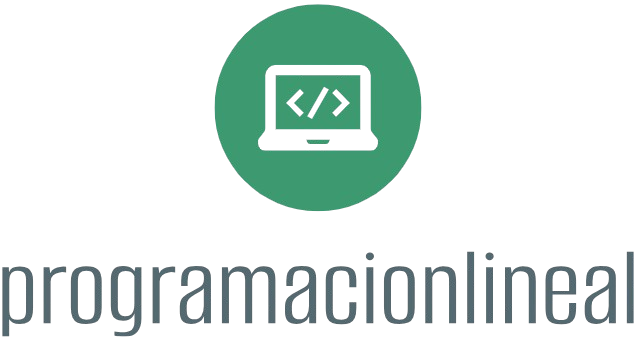Data visualization is an essential part of data analysis, allowing you to present complex information clearly and understandably. Python offers a variety of libraries that make creating visualizations straightforward and effective. Here’s a guide on how to use Python for data visualization:
- Setting Up Your Environment
Before you start with data visualization, ensure you have Python installed. You can use package managers like `pip` or `conda` to install necessary libraries.
“`bash
pip install matplotlib seaborn pandas plotly
“`
Or, if you are using Anaconda:
“`bash
conda install matplotlib seaborn pandas plotly
“`
- Popular Libraries for Data Visualization
Here are some of the most commonly used libraries for data visualization in Python:
– Matplotlib
Matplotlib is one of the most widely used libraries for creating static visualizations in Python.
“`python
import matplotlib.pyplot as plt
Sample Data
x = [1, 2, 3, 4, 5]
y = [2, 3, 5, 7, 11]
Create a line plot
plt.plot(x, y, marker=’o’)
plt.title(‘Line Plot Example’)
plt.xlabel(‘X-axis Label’)
plt.ylabel(‘Y-axis Label’)
plt.grid()
plt.show()
“`
– Seaborn
Seaborn is built on top of Matplotlib and provides a more attractive aesthetic along with additional functionality for statistical visualizations.
“`python
import seaborn as sns
import pandas as pd
Sample Data
data = {
‘Category’: [‘A’, ‘B’, ‘C’, ‘A’, ‘B’, ‘C’],
‘Values’: [4, 7, 2, 6, 3, 4]
}
df = pd.DataFrame(data)
Create a bar plot
sns.barplot(x=’Category’, y=’Values’, data=df)
plt.title(‘Bar Plot Example’)
plt.show()
“`
– Pandas Visualization
Pandas has built-in plotting capabilities that leverage Matplotlib. It’s convenient when you are already working with Pandas DataFrames.
“`python
import pandas as pd
Create a DataFrame
df = pd.DataFrame({
‘Months’: [‘Jan’, ‘Feb’, ‘Mar’, ‘Apr’],
‘Sales’: [200, 300, 250, 400]
})
Plot using Pandas
df.plot(x=’Months’, y=’Sales’, kind=’bar’, title=’Monthly Sales’)
plt.ylabel(‘Sales’)
plt.show()
“`
– Plotly
Plotly is a graphing library that allows for interactive plots. It’s particularly useful for web applications or dashboards.
“`python
import plotly.express as px
Sample Data
df = px.data.iris()
Create a scatter plot
fig = px.scatter(df, x=’sepal_width’, y=’sepal_length’, color=’species’, title=’Iris Species’)
fig.show()
“`
- Creating Different Types of Visualizations
Here are examples of various types of visualizations you can create:
– Line Plot
“`python
plt.plot(df[‘Months’], df[‘Sales’])
plt.title(‘Sales Over Time’)
plt.xlabel(‘Months’)
plt.ylabel(‘Sales’)
plt.show()
“`
– Bar Plot
“`python
sns.barplot(x=’Category’, y=’Values’, data=df)
plt.title(‘Bar Plot Example’)
plt.show()
“`
– Histogram
“`python
sns.histplot(df[‘Values’], bins=5, kde=True)
plt.title(‘Histogram Example’)
plt.show()
“`
– Box Plot
“`python
sns.boxplot(x=’Category’, y=’Values’, data=df)
plt.title(‘Box Plot Example’)
plt.show()
“`
– Heatmap
“`python
Create a heatmap
matrix_data = pd.DataFrame([[1, 2, 3], [4, 5, 6], [7, 8, 9]], columns=[‘A’, ‘B’, ‘C’])
sns.heatmap(matrix_data, annot=True, cmap=’YlGnBu’)
plt.title(‘Heatmap Example’)
plt.show()
“`
- Customizing Visualizations
Customize your visualizations using Matplotlib and Seaborn options:
– Title and Labels:
“`python
plt.title(‘Custom Title’)
plt.xlabel(‘X-axis label’)
plt.ylabel(‘Y-axis label’)
“`
– Color and Style:
“`python
plt.plot(x, y, color=’red’, linestyle=’–‘, linewidth=2)
“`
– Legends:
“`python
plt.legend([‘Line Legend’])
“`
- Saving Visualizations
You can easily save your plots to files in various formats (PNG, JPG, PDF, etc.):
“`python
plt.savefig(‘my_plot.png’, dpi=300)
“`
Conclusion
Python’s rich ecosystem of libraries empowers you to create a variety of data visualizations that can help present your data effectively. Whether you choose simple visualizations using Matplotlib or more advanced interactive plots using Plotly, the key is to experiment and find the visualization that best represents your data. As you become more comfortable with these libraries, you’ll be able to conduct deeper analyses and communicate your findings more effectively through visual means.











